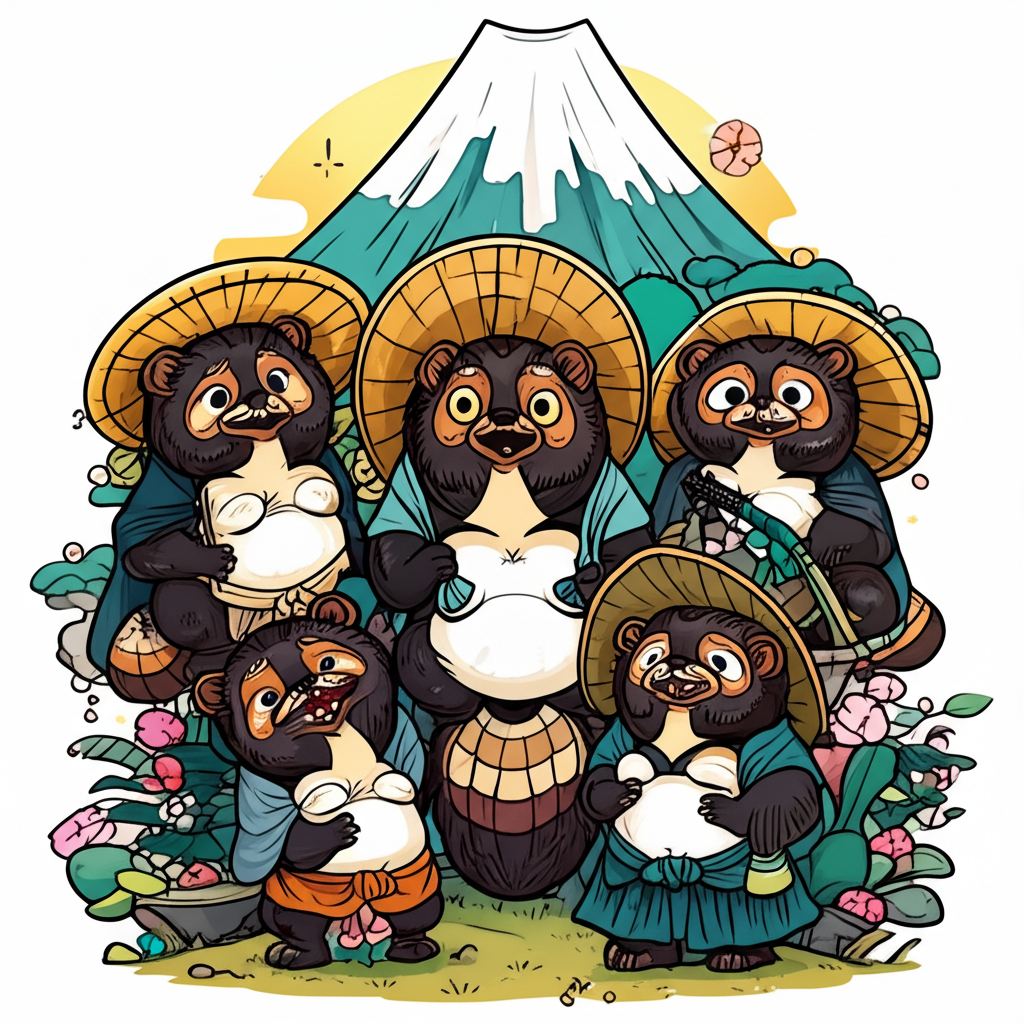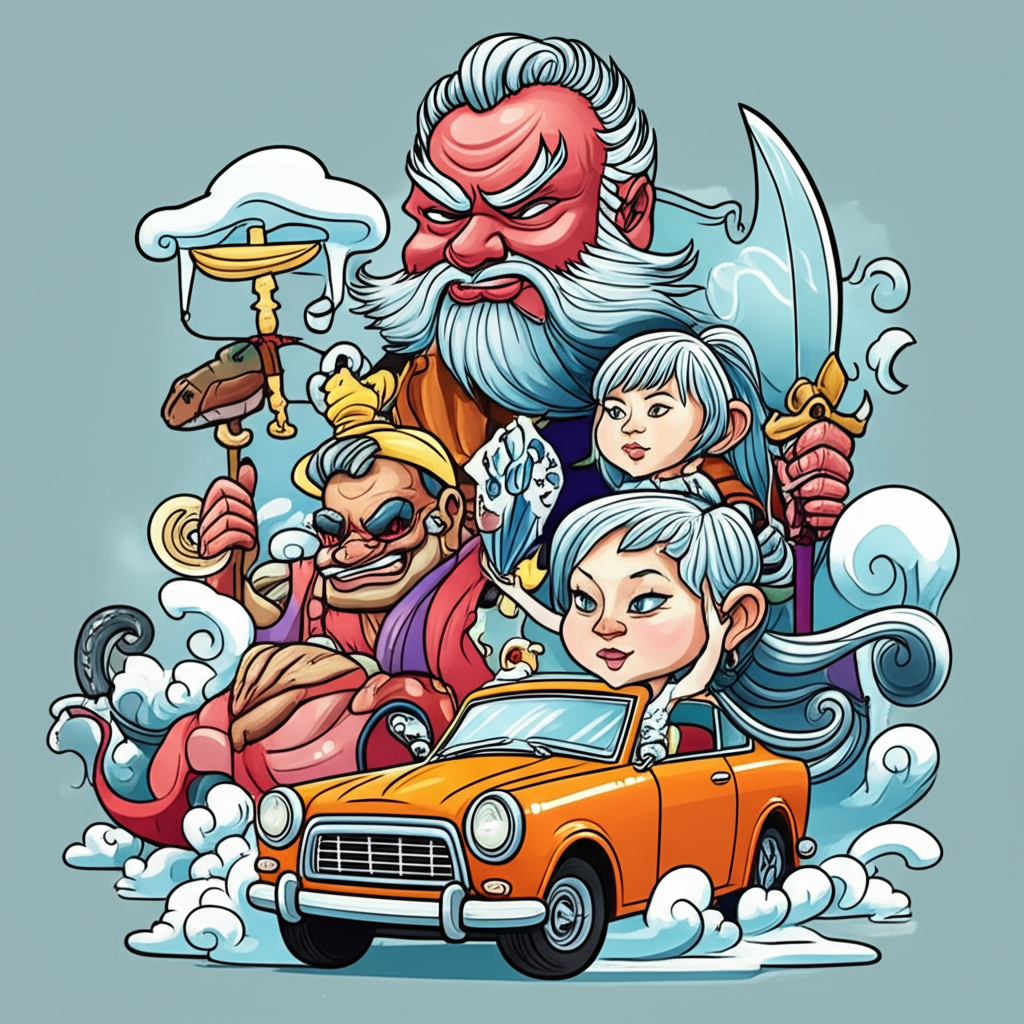
High in the mists that swirl around the sacred peak of Mount Fuji, whispered tales speak of more than just snow and volcanic rock. For centuries, Japanese folklore has painted these slopes as the domain of spirits, both benevolent and mischievous. Among them, the tanuki, the raccoon dog, holds a particularly intriguing place, often depicted as a playful guardian, a trickster spirit deeply intertwined with the mountain’s mystical aura. It is important to remember that this is a traditional story passed down through generations of Japanese people. This tale is not a statement of fact, but a window into the rich tapestry of cultural imagination.
Origins and Cultural Background
The story of the tanuki’s connection to Mount Fuji likely emerged during the Edo period (1603-1868), a time of relative peace and flourishing arts in Japan. This era saw a rise in popular culture, with woodblock prints, kabuki theater, and storytelling becoming widespread forms of entertainment. During this time, Japan’s socio-economic structures underwent significant changes that influenced the way people lived and perceived their environment. The Edo Period was also characterized by a deep reverence for nature, with mountains, forests, and rivers often viewed as the abodes of spirits and deities. People of that era believed in the existence of kami, spirits residing in natural phenomena and sacred places. Their world was filled with wonder and potential danger, where the natural world held immense power. They saw a delicate balance between humans and nature, one that required respect and understanding. The tanuki, with its ambiguous nature, perfectly embodied this duality.
Character Description
The tanuki, or raccoon dog, is a real animal native to Japan, East Asia and parts of Europe. However, the tanuki of folklore transcends the mundane. It is portrayed as a shapeshifting trickster, often depicted with a large belly, a sake bottle, and a charming, if somewhat roguish, smile. One of its most prominent features in artistic representations is its comically large scrotum, which is often used in magical ways – as a drum, a sail, or even a shield.
Symbolically, the tanuki embodies duality. Its large belly represents abundance and prosperity, a wish for good fortune. The sake bottle signifies revelry and a carefree attitude, a release from the pressures of daily life. The oversized scrotum, while often humorous, symbolizes fertility and good luck, but also serves as a reminder of the tanuki’s trickster nature – a visual joke played on those who take life too seriously. It’s important to note that the tanuki’s shape-shifting ability represents the adaptability and resilience needed to navigate the complexities of life. Rather than presenting the tanuki as a divine entity, it’s more fitting to see it as an embodiment of these complex ideas.
Main Story
The tale is told of old Manjiro, a woodcutter who lived in a small village at the foot of Mount Fuji. Manjiro was a kind and honest man, but he was poor, and his family struggled to make ends meet. One day, as he climbed the slopes of Fuji in search of firewood, he stumbled upon a tanuki caught in a hunter’s snare.
The tanuki, its eyes wide with fear, pleaded with Manjiro to release it. Manjiro, taking pity on the creature, carefully freed it from the trap. The tanuki, now free, bowed deeply to Manjiro and promised to repay his kindness.
"I am a guardian of this mountain," the tanuki said, its voice surprisingly deep. "I see your poverty, Manjiro. I will help you."
The tanuki then led Manjiro to a hidden grove, where it used its magic to conjure a pile of gold coins. "Take this," the tanuki said. "It is enough to provide for your family for many years. But remember," the tanuki warned, "use it wisely, and never forget the kindness you showed me."
Manjiro, overwhelmed with gratitude, returned to his village a wealthy man. He used the gold to build a new house, buy land, and help his neighbors. He lived a long and prosperous life, always remembering the tanuki who had saved him.
But the story doesn’t end there. Word of Manjiro’s good fortune reached the ears of a greedy merchant named Kenshin. Kenshin, consumed by avarice, set out to find the tanuki and claim his own share of the mountain’s hidden treasures.
Kenshin climbed Mount Fuji, shouting and demanding the tanuki reveal itself. He threatened to destroy the forest if it refused. The tanuki, witnessing Kenshin’s greed and disrespect for the mountain, decided to teach him a lesson.
Using its shapeshifting abilities, the tanuki transformed itself into a beautiful woman, beckoning Kenshin deeper into the forest. The merchant, blinded by lust and greed, followed her blindly.
The tanuki led Kenshin on a wild chase, through thorny bushes and across treacherous ravines. It transformed itself into a series of illusions, leading Kenshin further and further away from the path. Finally, exhausted and disoriented, Kenshin found himself standing on the edge of a deep ravine.
The tanuki revealed its true form, laughing at Kenshin’s foolishness. In his anger, Kenshin lost his balance and tumbled into the ravine, never to be seen again.
The tanuki, satisfied that justice had been served, returned to its duties as guardian of Mount Fuji, forever watching over the mountain and its people.
Symbolism and Meaning
The tale of the tanuki guardian of Mount Fuji offers a rich tapestry of symbolic meanings. It speaks to the importance of kindness and compassion, as demonstrated by Manjiro’s act of freeing the trapped tanuki. It also serves as a cautionary tale about the dangers of greed and disrespect for nature, as exemplified by Kenshin’s fate. The tanuki itself represents the power of nature, its ability to reward those who respect it and punish those who exploit it. The story may have represented the ancient people’s view on the importance of respecting nature and the consequences of greed. It highlights the belief that nature possesses a sense of justice and can restore balance when disrupted.
Modern Perspective
Today, the tanuki remains a popular figure in Japanese culture. It appears in countless forms of media, from literature and anime to video games and advertising. Studio Ghibli’s animated film Pom Poko is perhaps the most famous modern depiction of tanuki, portraying them as a community struggling to protect their forest from human development. The tanuki’s image is often used to promote businesses, particularly restaurants and bars, where it is seen as a symbol of good luck and prosperity.
In cultural studies, the tanuki is often examined as a symbol of Japanese identity, its ambiguous nature reflecting the complexities and contradictions of Japanese society. It serves as a reminder of the importance of tradition, while also embracing the playful and humorous aspects of Japanese culture.
Conclusion
The story of the tanuki guardian of Mount Fuji is a captivating example of Japanese folklore, a tale that has been passed down through generations, offering insights into the values and beliefs of the ancient Japanese people. It is a story about kindness, greed, respect for nature, and the enduring power of storytelling. We recognize this as a cultural story and not a statement of belief or worship. As Muslims, we believe that only Allah is the true Creator and Sustainer of the universe.
This story, like many others from different cultures around the world, enriches our understanding of the human imagination and the power of cultural heritage. The tale of the tanuki reminds us of the importance of respecting nature, valuing kindness, and recognizing the universal themes that connect us across cultures and time.





